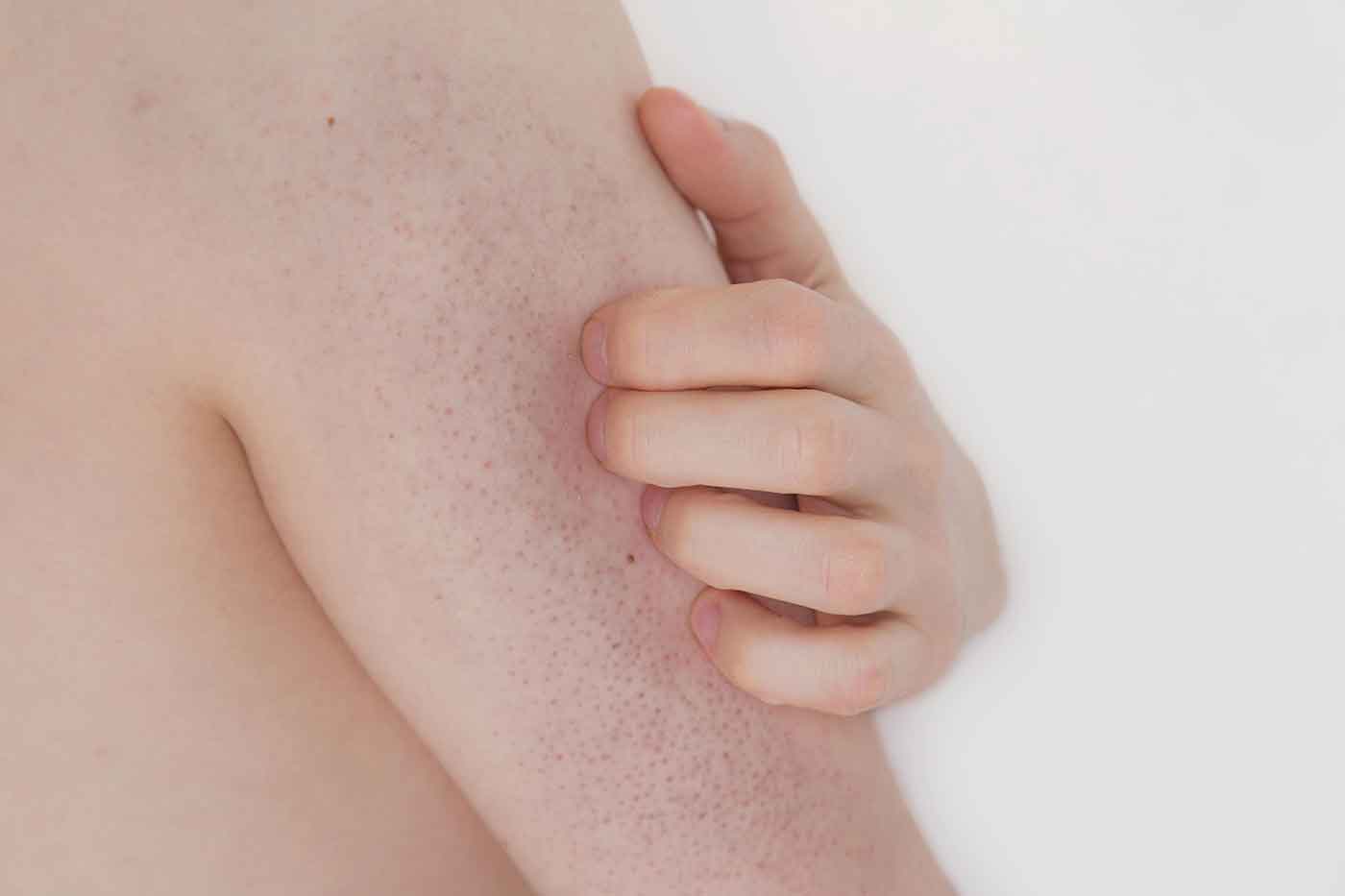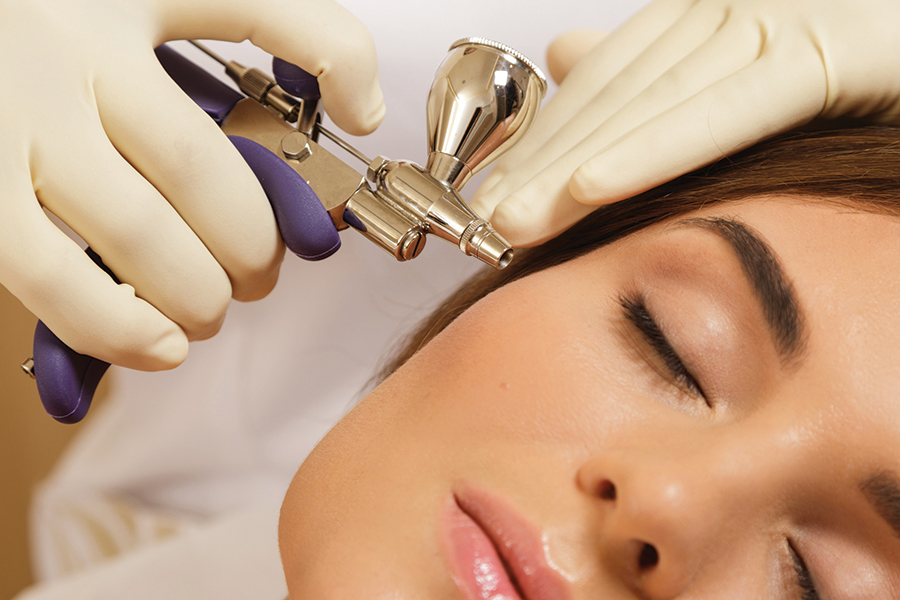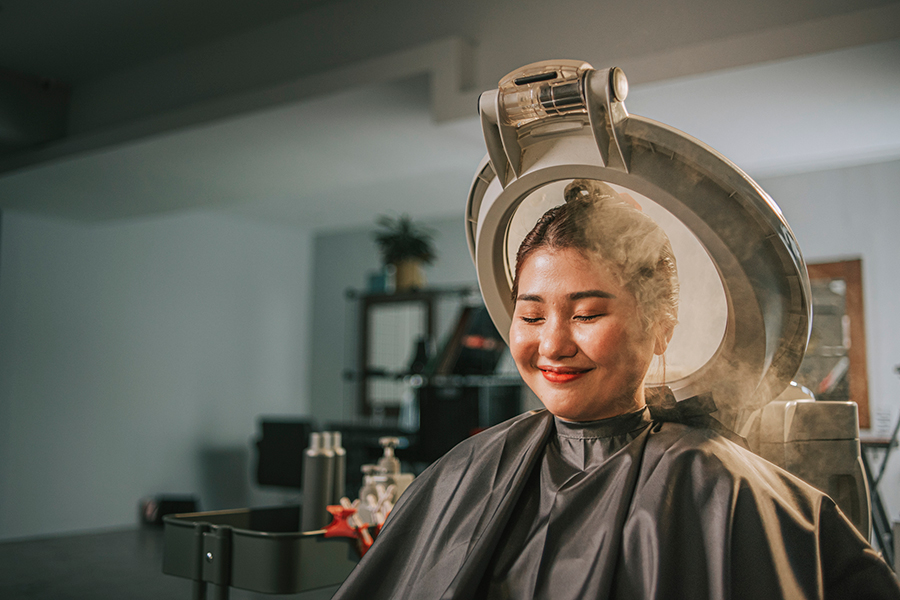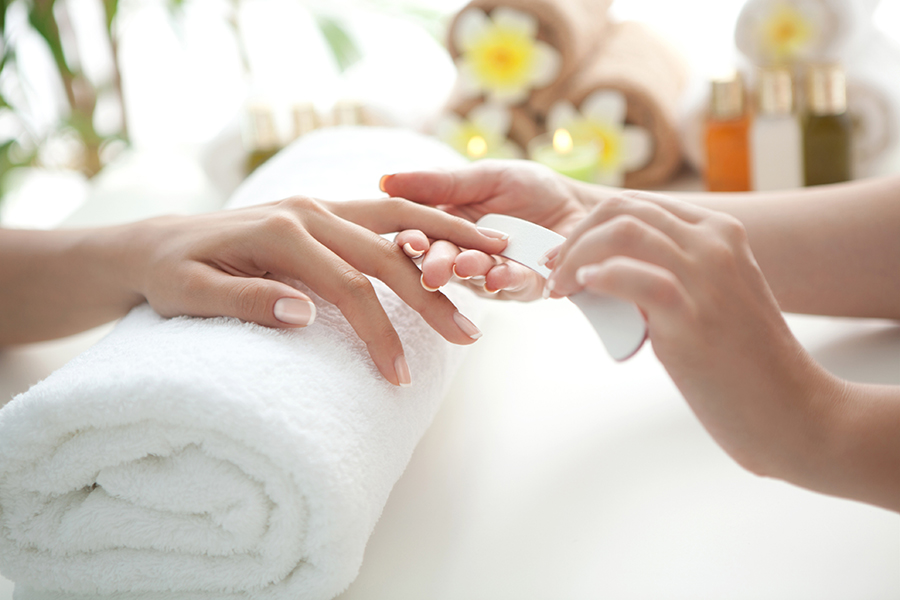A skin condition that can be treated with proper medical care
AStrawberry skin is a general term used for a common skin problem called keratosis pilaris. Keratosis means ‘scaly skin’ and pilaris means ‘hair’. This condition starts in childhood but becomes more prominent in teenage years and adulthood. It affects 50–70% of teenagers and 40% of adults.
Generally, the skin regenerates regularly by shedding the dead cells and replacing it with new skin cells. However, sometimes instead of exfoliating the dead skin cells; it gets accumulated in the hair follicle itself. This gives a bumpy feel to the skin.
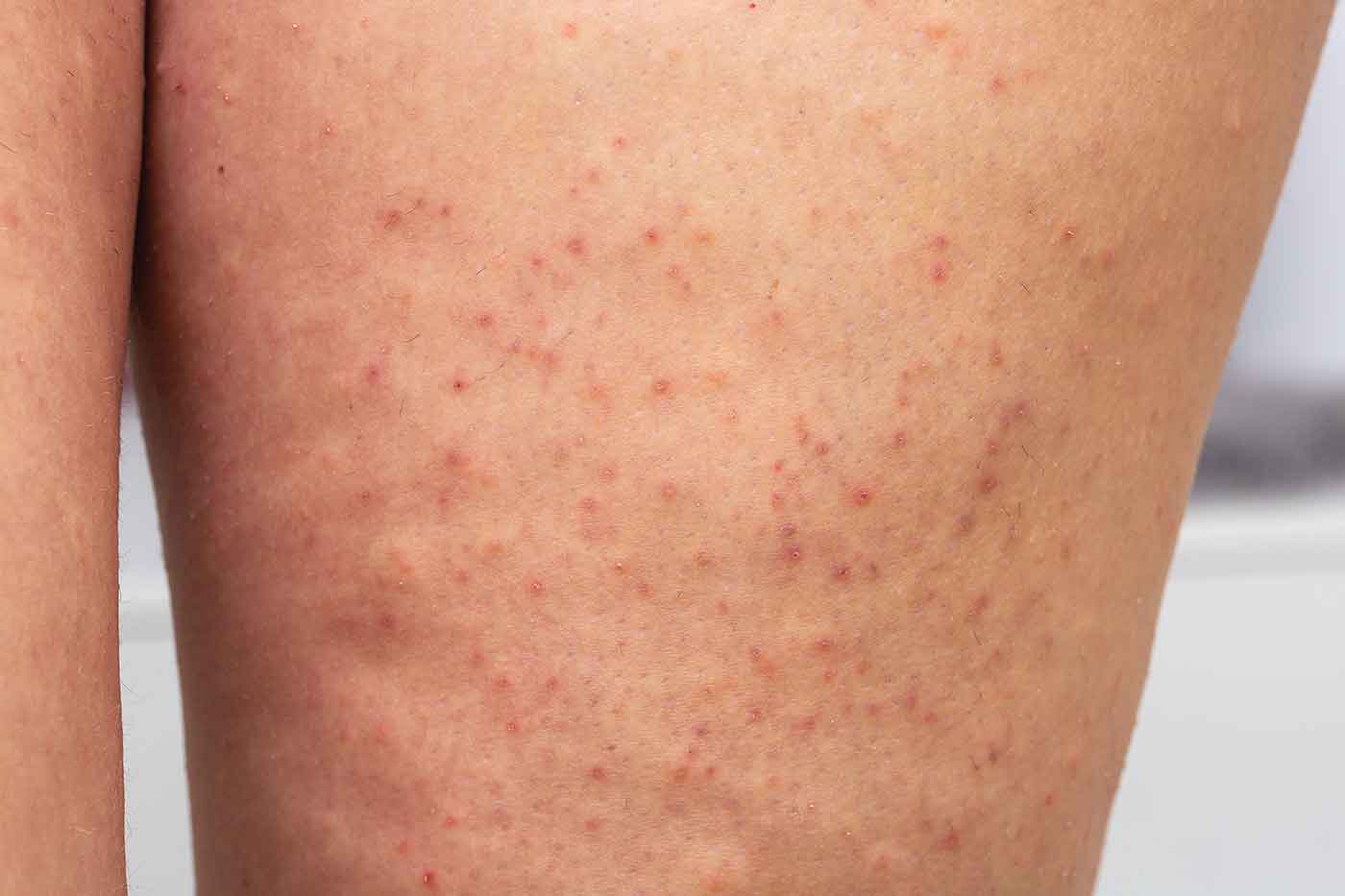
Keratosis pilaris is not a disease of skin but a condition where the hair follicle openings become enlarged and clogged; thus, resembling strawberry seeds on the skin. Hence the name Strawberry skin has become more common amongst patients.
The common sites of keratosis pilaris are the forearm or the upper hand or the outer part of the thigh. It is thought to have a genetic association & correlations have been made with mutations in filaggrin which is a key protein in skin barrier function. It has been associated with other skin diseases such as atopic dermatitis and ichthyosis, xerosis, diabetes mellitus, malnutrition etc. It tends to be prominent in the winter months and is likely due to the reduced moisture content of the air.
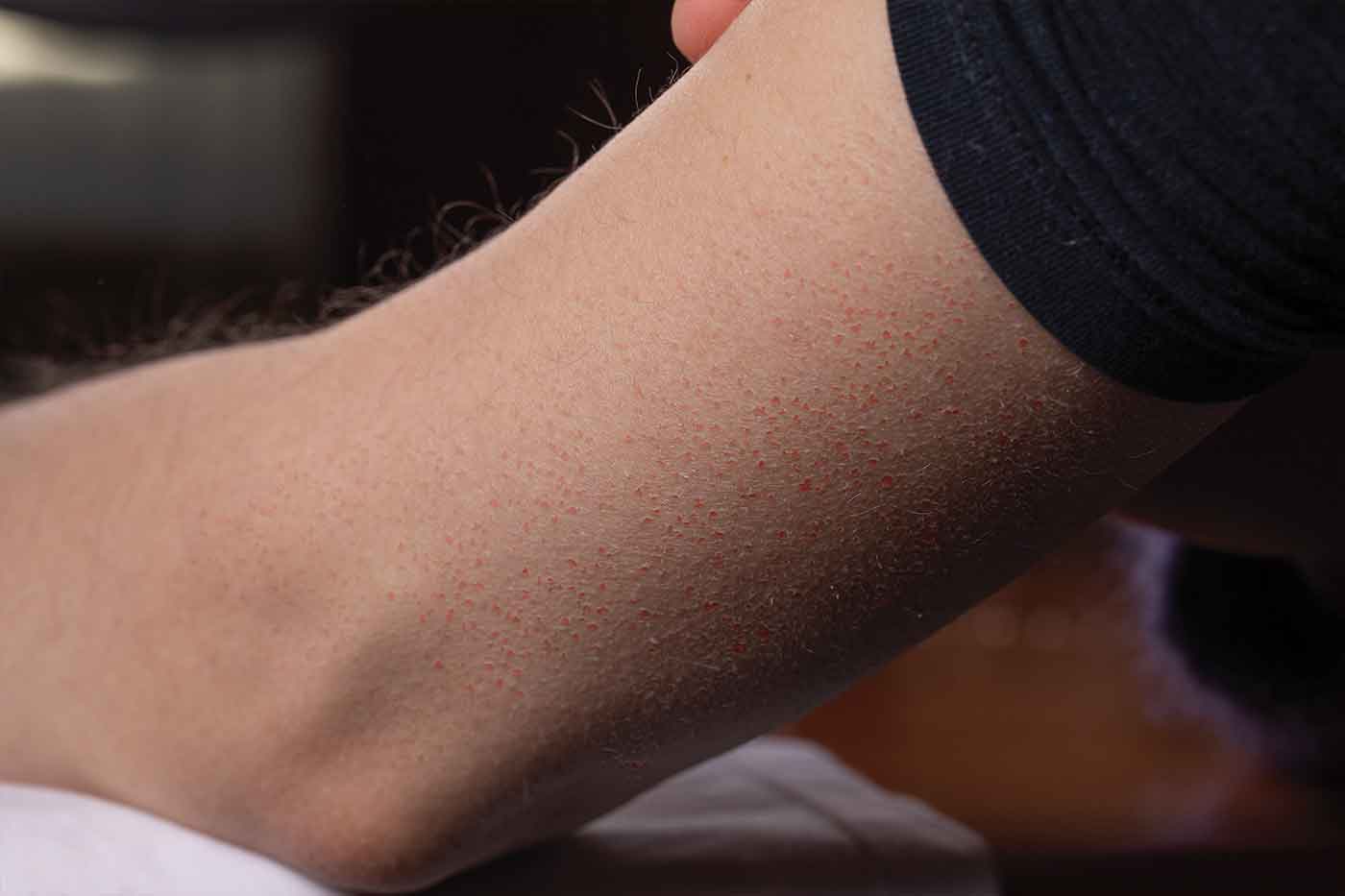
Causes of strawberry skin are:
-
- Shaving of hair with razor- When we shave the hair, we cut the hair close to the skin. The hair pigment is generally darker as compared to the skin colour. Hence after shaving the hair, the skin appears to have dark and light spots. Shaving of hair also exposes the sebum or oil of skin to the outer environment. This oxidises the oil and develops into a comedone that is black head or white head. Development of comedones lead to a rough bumpy skin texture again resembling a strawberry skin surface.
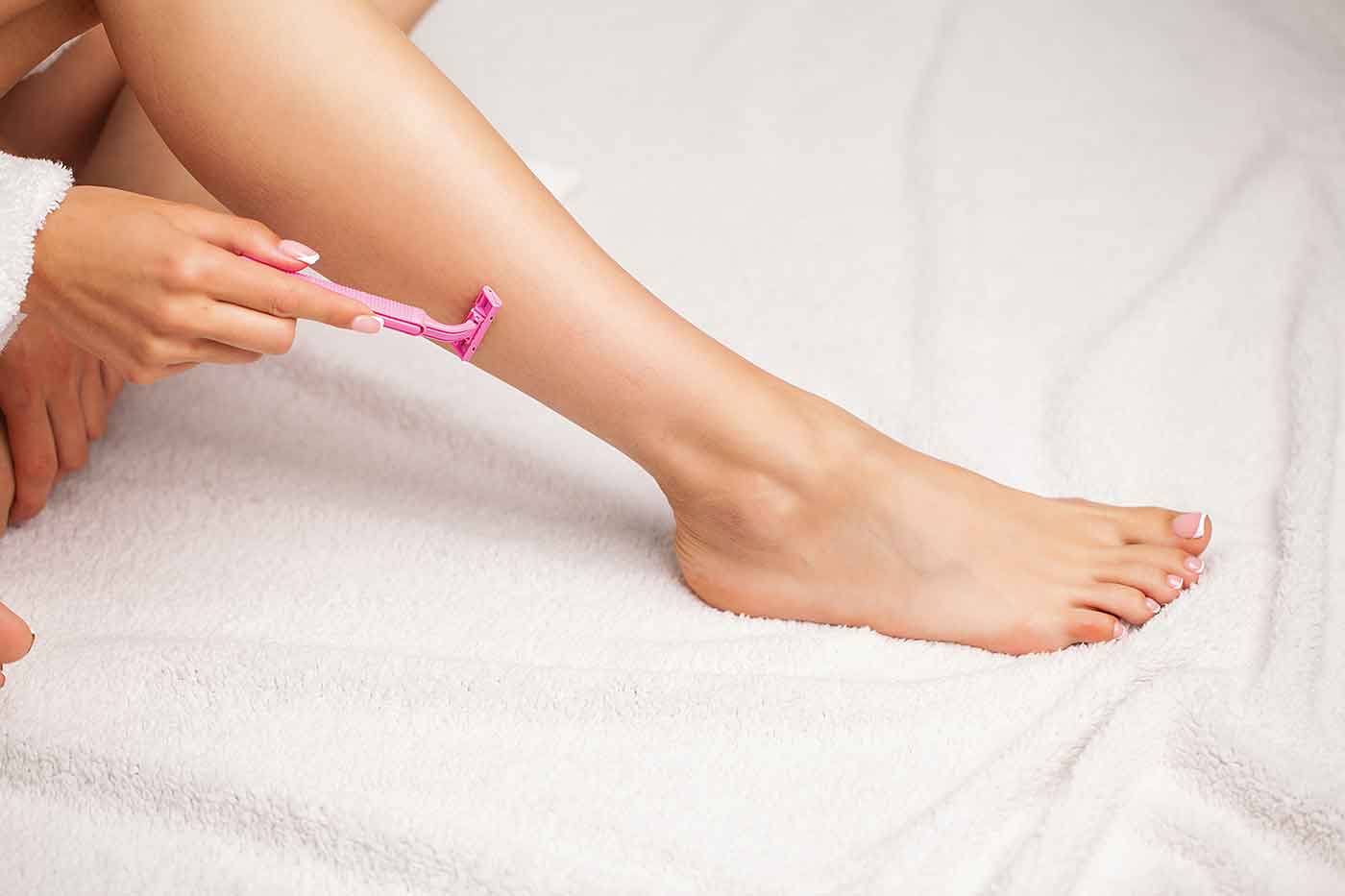
-
- Waxing of hair- When one tries hair removal by waxing, hot or cold wax is applied on the skin and it is removed with a strip with some force. It leads to removal of hair with friction at the skin and hair junction. Irritation of the skin or aggressive hair removal can lead to inflammation at the hair follicle openings.
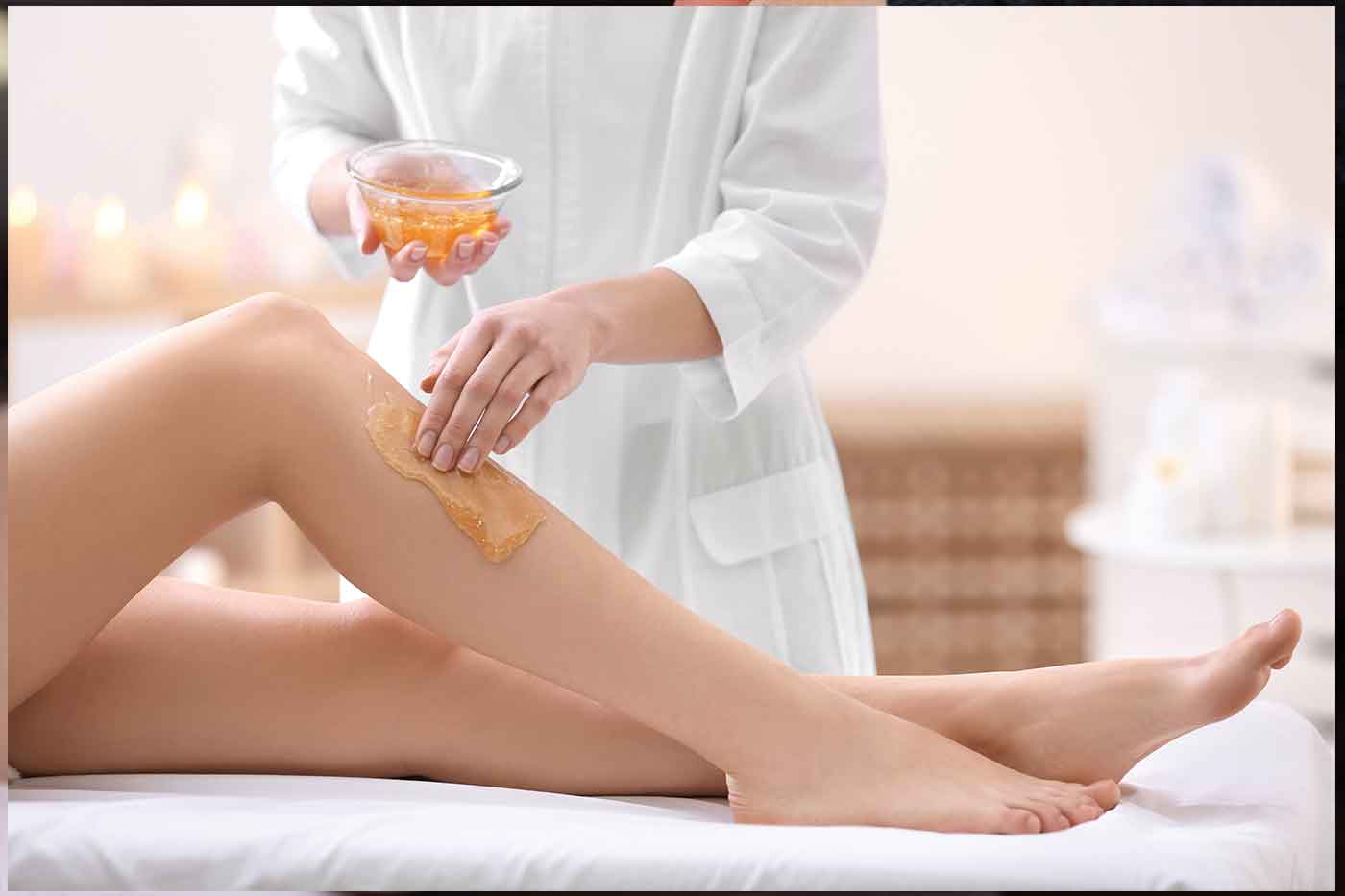
-
- Wearing tight clothes- Tight synthetic material of clothes do not absorb the sweat formed on the skin. This leads to accumulation of sweat and ultimately creates a favourable environment for bacteria to grow along the hair follicle structures. Clogging of hair follicle openings with excess sebum content and bacteria cause folliculitis like boils on the skin surface.

Symptoms of strawberry skin are:
Patients presents with the ‘goosebump’ or ‘chicken skin’ appearance of their skin. These small bumps can be skin-coloured, red, or brown. The skin can feel rough, dry, and can occasionally be itchy. Redness can also be found around many of the small bumps. Psychological distress from the appearance of the lesions may prompt patients to seek care rather than symptoms from the lesions themselves.
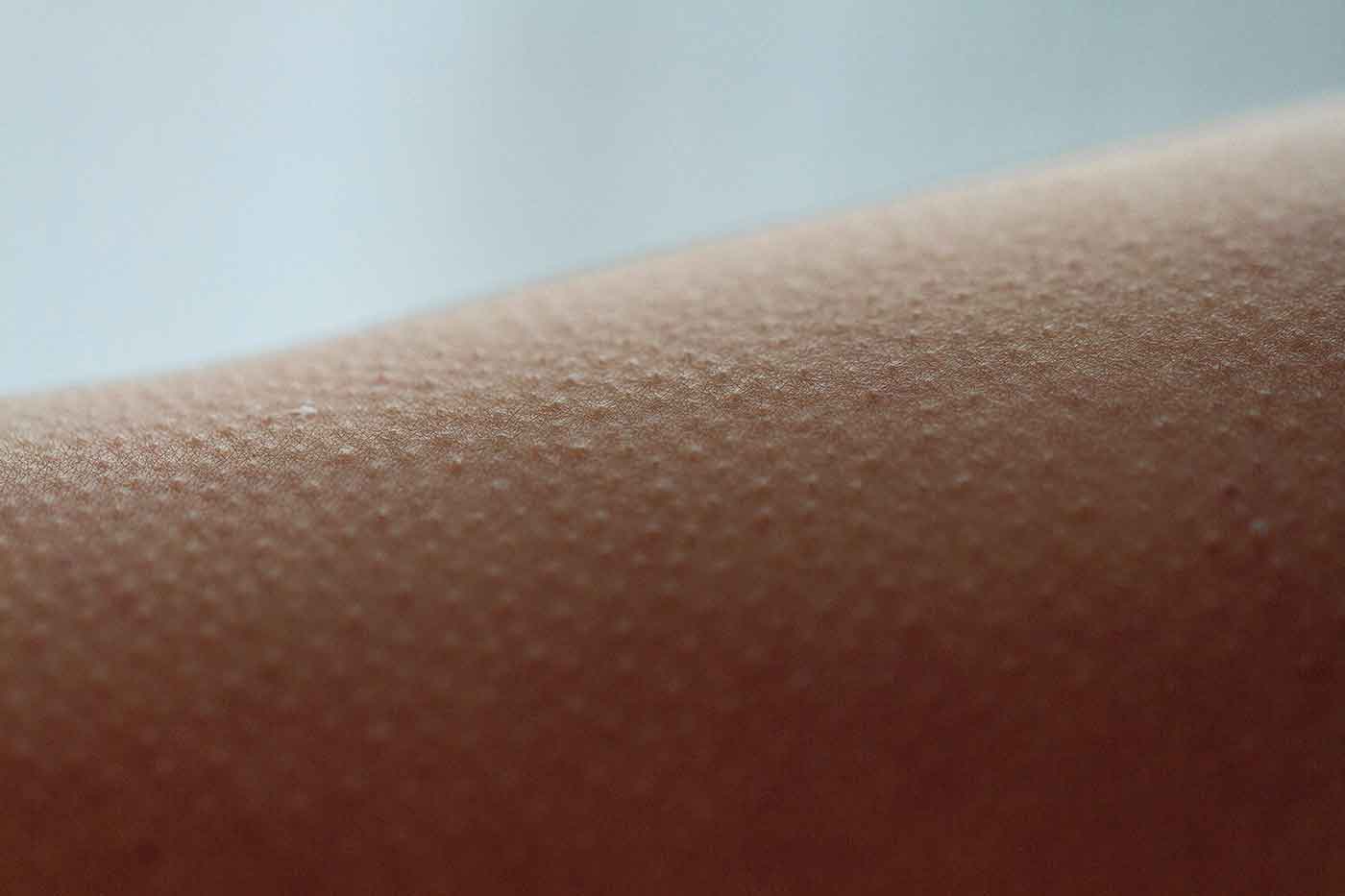
It presents on the extensor surfaces of the upper arms and thighs. The buttocks, trunk, chest, face, and distal extremities can also be involved.
Complications such as atrophy or scarring of skin with hair loss can be observed in some patients. Also, when patients try to rub the skin bumps or try to remove it like a blackhead it can lead to hyperpigmentation on the skin. Constant playing with such bumps can also lead to aggravation of skin infections like folliculitis, furunculosis etc.
Treatment of strawberry skin:
Keratosis pilaris is a clinical diagnosis and should be refered to a Dermatologist. Waxing, shaving and use of tight clothes can aggravate this condition and should be avoided. One can use moisturising creams that contains urea, salicylic acid or alpha hydroxy acids. This hydrate and help loosen the adherent and clogged skin cells in the follicles. Topical retinoids and topical steroid creams can be used to treat the bumps of the keratotic cells. Pulsed-dye laser or intense pulsed light laser helps in treating the erythema or redness of the boils.
However, the gold standard treatment for keratosis pilaris is the laser hair removal. This treatment addresses the tough hair and prevents the sequelae damage caused by the hair removal techniques.
Since it is not a skin disease, it takes time to improve this problem and can recur if one again uses shaving or waxing for hair removal. Hence patient education is crucial for proper management. Hot and humid climates can also aggravate this problem so lukewarm or cold- water bath is advised for such patients. Hyperpigmentation can be treated by depigmenting creams containing kojic acid, arbutin or azelic acid.

Inputs by Dr. Shefali Trasi Nerurkar, MBBS, MD (DERMATOLOGY), Consultant Dermatologist , Dr Trasi clinic and La Piel skin clinic

